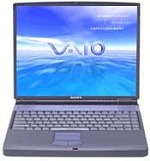|
Week of November 26, 2001 Blockbuster Deal of the Week from Site Selection's exclusive New Plant database |

Sony To Open
By JACK LYNEFirst Japanese PC Plant in China Site Selection Executive Editor of Interactive Publishing
BEIJING -- Sony Corp. (www.sony.com) will become the first Japanese manufacturer to set up a personal computer plant in China. The Tokyo-based electronics giant has announced that it will open a facility in Wuxi in Jiangsu province that will assemble Vaio notebook computers for the Chinese market.
Sony's decision to open a PC plant in eastern China comes as Chinese PC sales are rising and Japanese PC sales are ebbing.
Wuxi (pictured above), located on China's southeast coast in the central Yangtze River Delta, has a metro-area population of 4.3 million residents, including some 1.1 million people living in the city proper.
'Modest' First-Year Production Sony, however, certainly isn't diving headlong into the Chinese PC market. The Wuxi plant's first-year production will be limited, company officials said.Conjecture by Japanese industry observers has placed Sony's first-year Chinese production volume at anywhere from 10,000 to 200,000 units. At the project announcement, however, Sony officials only noted that first-year production volume would be "modest," with total units less than the 200,000 number predicted earlier by Nihon Keizai Shimbun. Thereafter, the Wuxi plant's production will "gradually be increased," Sony officials said. Even if the plant were to produce 200,000 units, that would be a tiny fraction of the 3.9 million Vaios that Sony projects shipping during its current fiscal year (which ends in March). "At the beginning in China, having the No. 1 position is not the target," Sony Mobile Network Co. President Keiji Kimura said at the project announcement. "Creating the market will be the objective at the initial stage." Unconventional Pricing?  Sony is taking a somewhat unconventional approach in its efforts to create the Chinese PC market. Sony is taking a somewhat unconventional approach in its efforts to create the Chinese PC market.
Some observers consider Sony's prices for its Chinese-made PC high for the Chinese market. One of the high-end Vaios that will be assembled in Wuxi will retail for around US$2,700, company officials explained; the other model will retail for some $3,800. Notebook PCs on average sell for between $2,600 and $2,800 in China, according to a Sony spokesman. Several Chinese PC makers, however, offer considerably cheaper models, albeit with fewer features. Legend Holdings Ltd., for example, sells a lower-end laptop in the Chinese market that lists for less than $1,200. Sony is going for the high end of China's PC market. The two models of its Chinese-made Vaio notebooks (pictured above) will retail for around $2,700 and $3,800.
Sony, however, is aiming its higher-end Vaios at the Chinese market's more well-heeled segments. Will 'Big Chance' Create Manufacturing Base? China's admission into the World Trade Organization also reportedly spurred the company's decision. WTO membership convinced Sony that investment conditions in China's high-tech sector were amply developed to merit establishing a Chinese PC plant more than half a decade after its U.S. rivals.At first, at least, all the half-finished goods and parts assembled in Wuxi will be exported from China, Okubo said. All of the Wuxi plant's initial output is targeted for the Chinese market, with no current plans to export to other nations, company officials said. China's WTO entry, however, has spurred a host of manufacturers to begin establishing low-cost manufacturing bases in China. (See Nov. 5's "Blockbuster Deal, "Expansion within a Layoff: Hitachi's 660-Employee Plant Headed for China.") Hiroshi Shoda, chairman of Sony's China unit, didn't indicate that his company might establish a low-cost Chinese PC manufacturing base. At the same time, he certainly didn't sound like he was ruling out the possibility. "We are looking for a big chance here," Shoda said, "and if we have a big chance, we may invest, of course."
©2001 Conway Data, Inc. All rights reserved. Data is from many sources and is not warranted to be accurate or current.
|